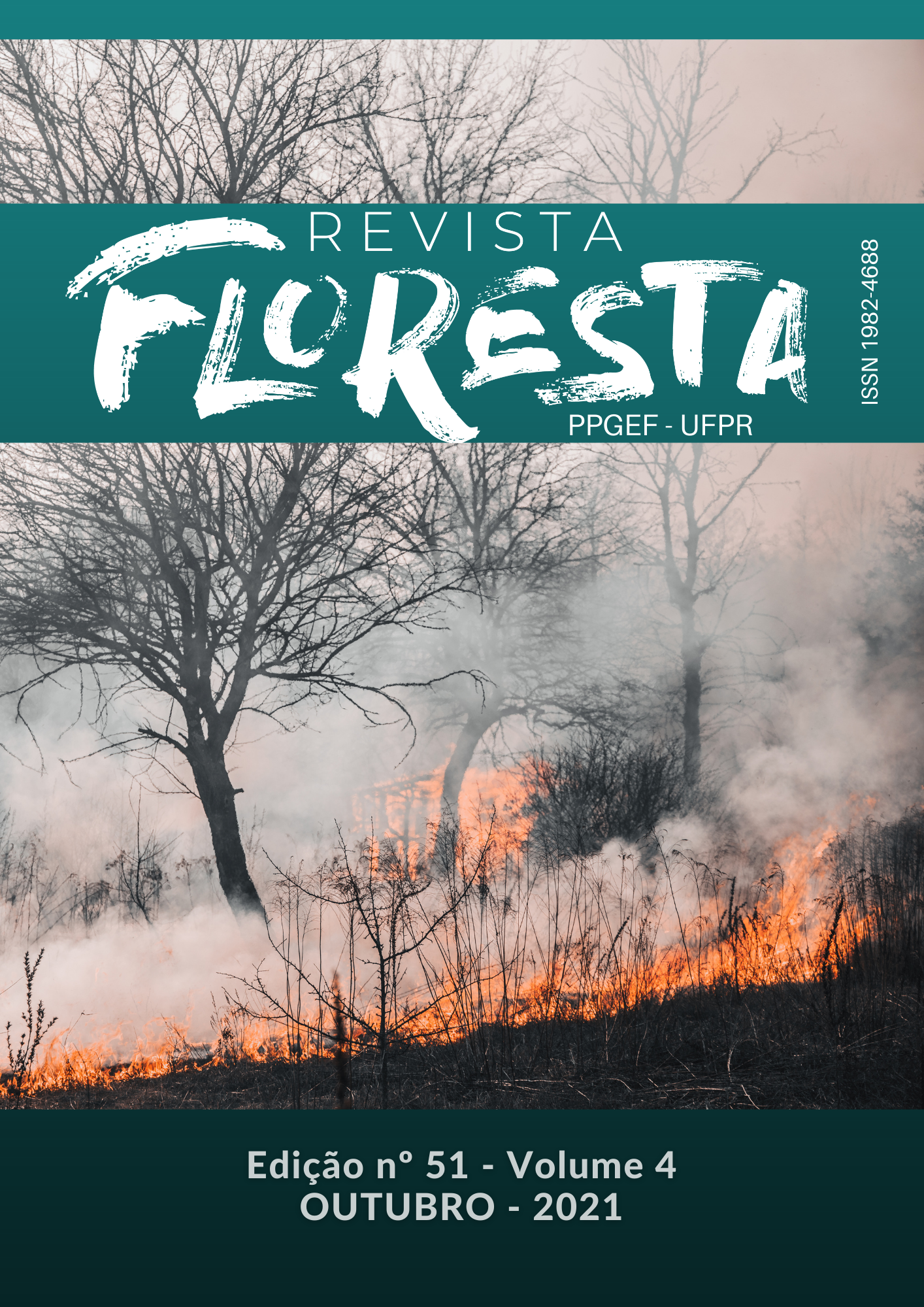TREE STRUCTURE IN THE FOREST OF PINDO MIRADOR BIOLOGICAL STATION, PASTAZA, ECUADOR
DOI:
https://doi.org/10.5380/rf.v51i4.75526Palavras-chave:
Regeneration forests, dasometry, forest structure, diversity indices.Resumo
The objective of this research was to characterize the arboreal structure of the evergreen piedmont forest of the Pindo Mirador biological station, Pastaza, Ecuador. Eight plots of 0.1 ha were systematically established; all trees were measured with D1. 30 from the floor ≥ 10 cm, and its total height. The abundance data by species and plots, diameter classes and height ranges were taken to be analyzed with descriptive statistics, and by means of non-parametric Kruskal-Wallis comparisons to verify differences between them. The contribution of species to the structure of the forest was evaluated by determining indices of structural diversity, including the Importance Value Index (IVI) of species, and their basal area. The results show a richness of 89 species belonging to 58 genera from 39 families, where trees with diameters between 10 and 20 cm and heights between 8 and 20 m predominate. It is concluded that it is a relatively homogeneous forest, with typical elements of the Andean-Amazonian transition, whose vertical structure of the dominant flight is of the middle or sub-canopy, moderately dense, dominated by trees of Iriartea deltoidea Ruiz & Pav., Alchornea latifolia Swartz, Hyeronima oblonga (Tul.) Müll. Arg. and Piptocoma discolor (Kunth) Pruski, those that have the greatest impact on its structure.
Downloads
Publicado
Como Citar
Edição
Seção
Licença
Direitos Autorais para artigos publicados nesta revista são do autor, com direitos de primeira publicação para a revista. Em virtude da aparecerem nesta revista de acesso público, os artigos são de uso gratuito, com atribuições próprias, em aplicações educacionais e não-comerciais.A revista, seguindo a recomendações do movimento Acesso Aberto, proporciona acesso publico a todo o seu conteudo, seguindo o principio de que tornar gratuito o acesso a pesquisas gera um maior intrcambio global de conhecimento.
Conteúdos do periódico licenciados sob uma CC BY-NC-SA 4.0



